After spending three months training in Andalusian kitchens during my culinary program, I learned that gazpacho recipe mastery isn't about following instructions it's about understanding balance. This traditional Spanish cold soup became my signature dish after countless tastings with local chefs who taught me the secrets passed down through generations. What started as research for my food column turned into a family obsession when Max declared it "liquid salad that doesn't taste scary."
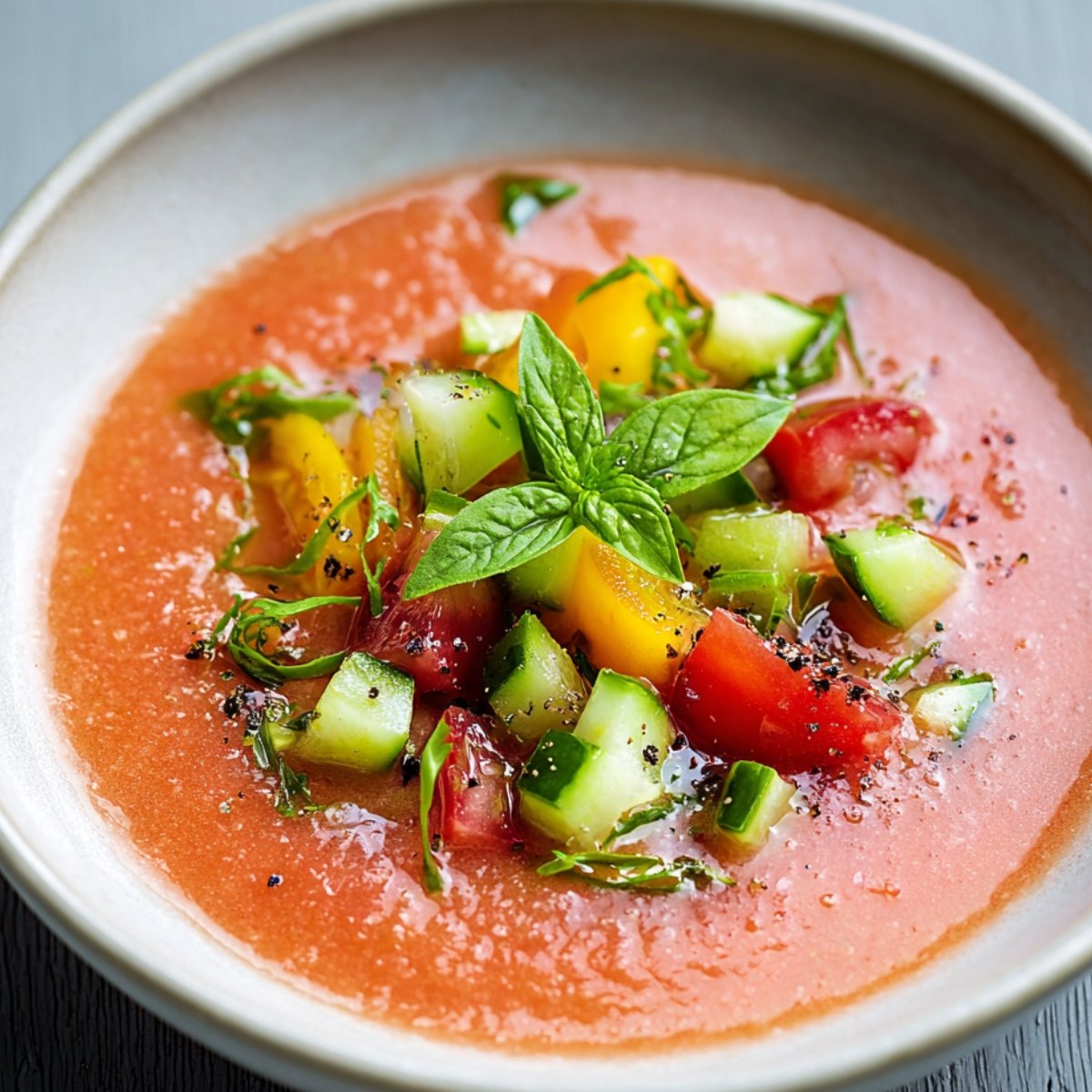
Why You'll Love This Traditional Gazpacho Recipe
This gazpacho recipe will save your sanity during those brutal summer days when even thinking about turning on the stove makes you sweat. There's no cooking involved - just chopping, blending, and chilling. Max loves it because he can drink it like a smoothie, and I love it because it uses up all those tomatoes that are getting too ripe to eat fresh. Plus, it actually gets better overnight, so you can make it ahead when you have time and enjoy it later when you don't.
What makes this recipe really work is how filling it is without being heavy. The day old bread gives it enough body to feel like a real meal, but all those fresh vegetables keep it light and refreshing. It's basically a salad you can drink, which sounds weird but tastes amazing. The olive oil and vinegar give it just enough richness and tang to wake up your taste buds, especially when everything is ice-cold from the fridge.
Jump to:
- Why You'll Love This Traditional Gazpacho Recipe
- Ingredients for Perfect gazpacho recipe
- How To Make Gazpacho Recipe Step By Step
- Smart Swaps for Different Needs
- Creative gazpacho recipe Variations
- Equipment For Gazpacho Recipe
- Storing Your Gazpacho Recipe Properly
- Why This Gazpacho Recipe Works Every Time
- Top Tip
- The Recipe My Grandma Wouldn't Let Me Forget
- FAQ
- Ready to Master Spanish Summer!
- Related
- Pairing
- gazpacho recipe
Ingredients for Perfect gazpacho recipe
The Tomato Base:
- Ripe tomatoes
- Day-old bread
- Extra virgin olive oil
- Sherry vinegar
The Vegetable Trinity:
- English cucumber
- Red bell pepper
- Sweet red onion
- Garlic cloves
Professional Touches:
- Sea salt
- Fresh black pepper
- Ice water
Essential Equipment:
- High-powered blender
- Fine-mesh strainer
- Large mixing bowl
See recipe card for quantities.
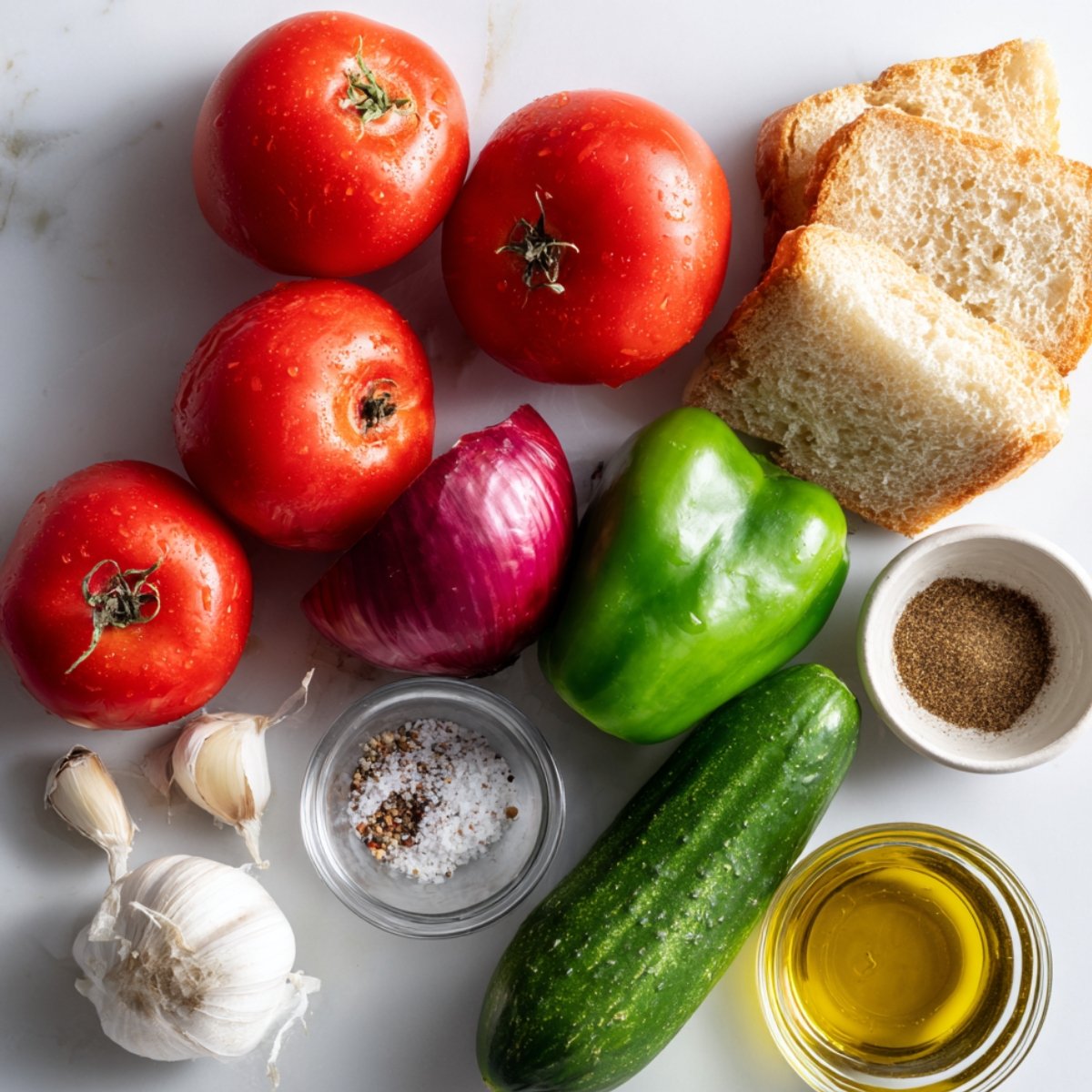
How To Make Gazpacho Recipe Step By Step
Preparation Phase:
- Score and blanch tomatoes for easy peeling
- Tear bread into chunks and soak briefly
- Dice vegetables uniformly for even blending
- Chill all ingredients beforehand
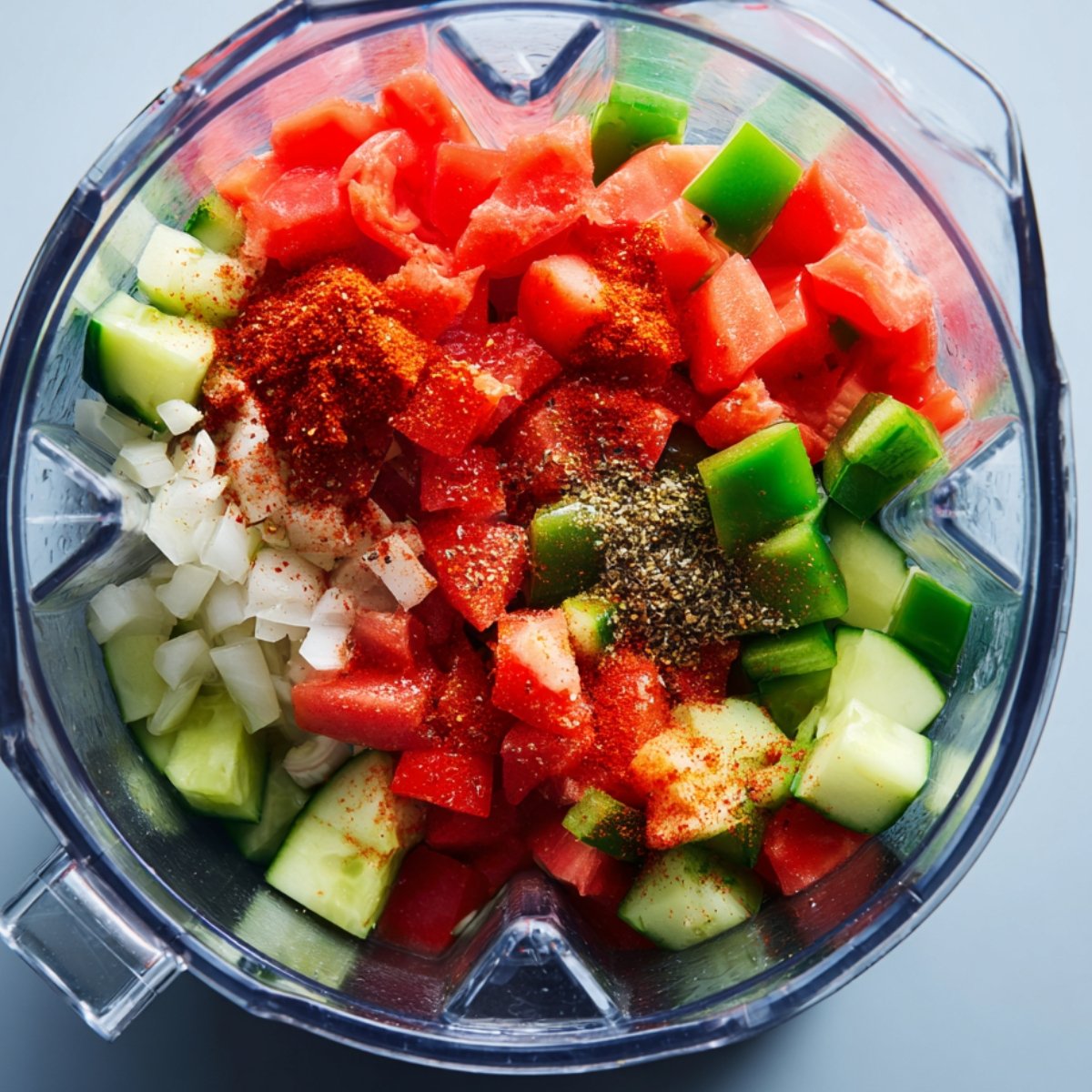
The Professional Blend:
- Combine bread with tomatoes first
- Add vegetables gradually while blending
- Stream in olive oil slowly for emulsification
- Adjust consistency with ice water
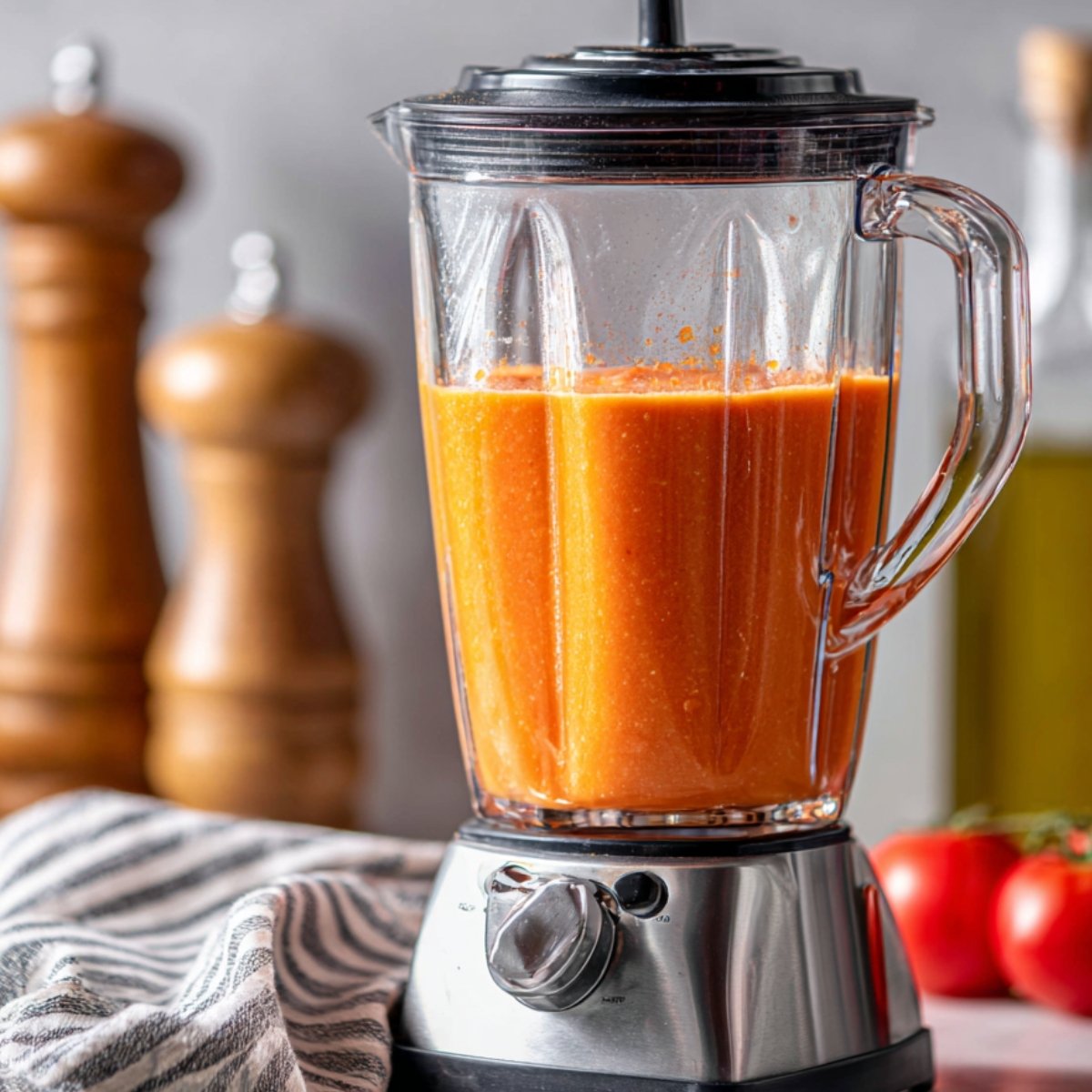
Refinement Stage:
- Strain through fine mesh for silky texture
- Season carefully with salt and vinegar
- Chill for minimum 4 hours
- Taste and adjust before serving
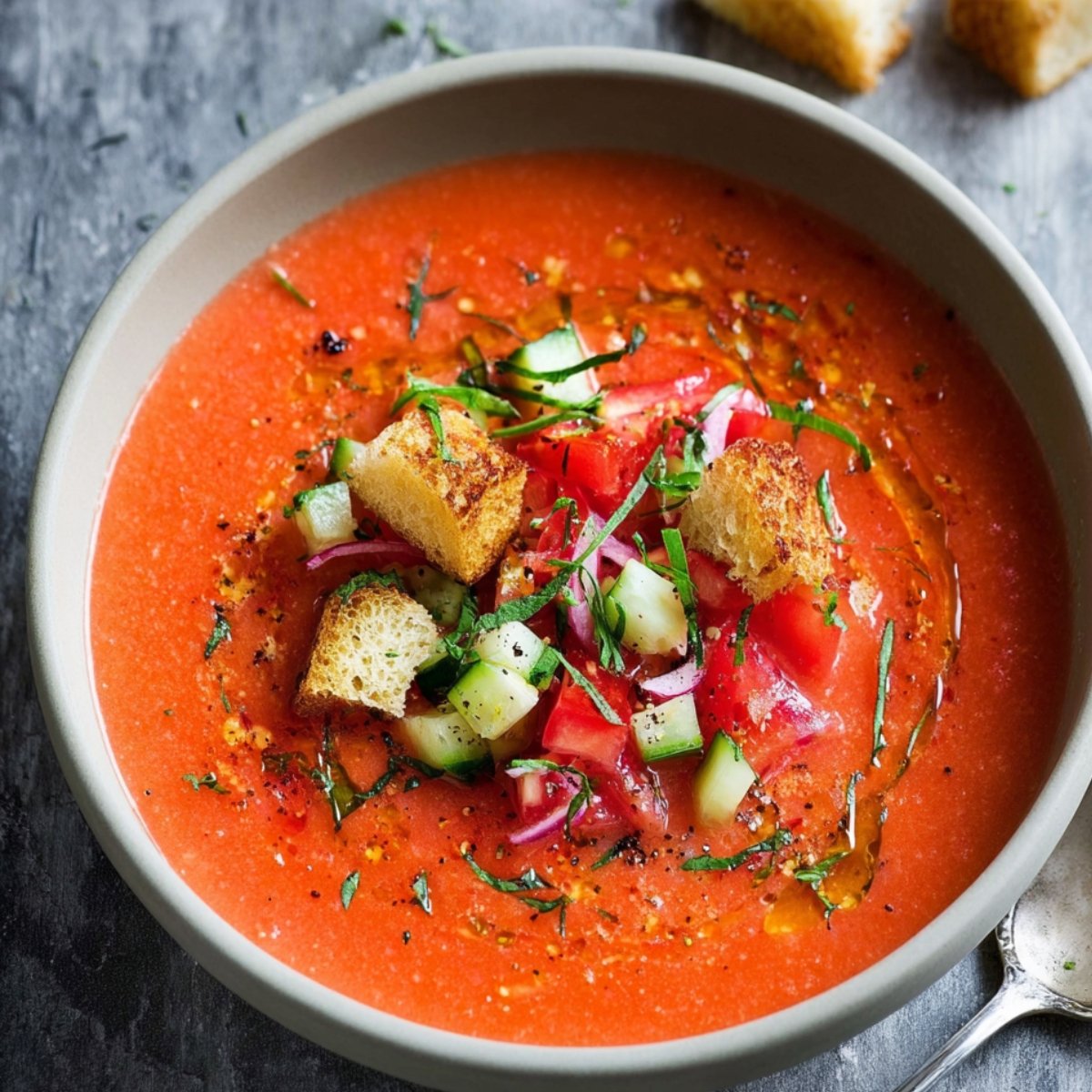
Smart Swaps for Different Needs
Bread Alternatives:
- Gluten-free bread → Day-old bread
- Almond flour → Traditional bread
- Skip bread → Add avocado for creaminess
Vegetable Modifications:
- Yellow tomatoes → Red tomatoes
- Sweet peppers → Bell peppers
- Shallots → Red onion
Acid Adjustments:
- Red wine vinegar → Sherry vinegar
- Lemon juice → Vinegar
Creative gazpacho recipe Variations
White Gazpacho (Ajo Blanco):
- Blanched almonds replace tomatoes
- White grapes add sweetness
- Garnish with green grape halves
Watermelon Summer Version:
- Replace half the tomatoes with watermelon
- Add fresh mint and lime
- Perfect for August entertaining
Green Garden Gazpacho:
- Cucumber and avocado base
- Fresh herbs and lime juice
- Light and refreshing alternative
Equipment For Gazpacho Recipe
- High-speed blender
- Fine-mesh strainer
- Large mixing bowls
- Sharp chef's knife
Storing Your Gazpacho Recipe Properly
Refrigerator Storage (3-4 days):
- Store in airtight glass containers
- Stir before serving (separation is normal)
- Keep temperature below 40°F consistently
Freezing (not recommended):
- Texture changes significantly after thawing
- Fresh vegetables lose their crisp flavor profile
Make-Ahead Tips:
- Prepare base up to 2 days ahead
- Add final seasonings just before serving
- Garnish immediately before presentation
Why This Gazpacho Recipe Works Every Time
After making this traditional gazpacho recipe countless times during hot summers, here's what makes it so reliable. The vegetables carry the whole dish when your tomatoes are super ripe and your cucumbers are fresh and crisp - there's really no way to screw this up. The tomatoes give you all the sweetness and body, while the cucumbers add that cool crunch that makes every spoonful refreshing. You don't need any special chopping skills because the blender does all the work for you.
The trick that most people don't know is using day-old bread instead of fresh. That slightly stale bread soaks up all the vegetable juices and turns into this smooth, thick base that makes gazpacho recipe feel like a real meal instead of just watery tomato juice. Fresh bread gets mushy and weird, but stale bread holds together and thickens everything just right. The best part? This soup actually tastes better after it sits in the fridge for a few hours. All those strong flavors - the garlic, onion, vinegar, olive oil calm down and blend together.
Top Tip
- The tomatoes make or break your gazpacho, so don't compromise here. You want tomatoes that are so ripe they're practically falling apart when you touch them - the kind that smell sweet and summery even before you cut into them. If you press gently and they don't give a little, or if they don't have much smell, your gazpacho will taste flat and watery. I've learned this the hard way after making bland batches with grocery store tomatoes that looked pretty but had zero flavor.
- Never use fresh bread for this recipe, even if it seems wasteful to let good bread go stale. Day-old or even two-day-old bread is what creates that smooth, thick texture that makes gazpacho feel substantial instead of like chunky tomato water. Fresh bread turns to mush and disappears into the soup, but stale bread holds its structure just enough to soak up all those vegetable juices and thicken everything perfectly. If you only have fresh bread, toast it lightly and let it cool completely before using.
- This is the trick my grandmother taught me that most recipes skip - let your chopped vegetables sit with coarse salt for about 20 minutes before you blend anything. The salt draws out the natural juices from the tomatoes, cucumber, and onion, concentrating all those flavors and creating more liquid for a smoother blend. It's the difference between gazpacho that tastes bright and intense versus one that tastes like diluted vegetables.
The Recipe My Grandma Wouldn't Let Me Forget
My grandmother learned to make gazpacho recipe during the summers she spent with her aunt in Seville back in the 1940s. She'd tell me stories about how her aunt would send her to the market every morning to pick out the ripest tomatoes, always pressing them gently to make sure they were soft but not mushy. "If the tomato doesn't smell like summer, don't buy it," she'd say in her mix of English and Spanish.What made Grandma's gazpacho recipe different was her stubborn way of doing everything by hand first, then using the blender.
"The salt pulls out the good flavors," she'd explain while Max and I watched her work. She never measured anything just tasted and adjusted until it was right. The bread had to be from yesterday's loaf, never fresh, and she always finished each bowl with a drizzle of her best olive oil and a sprinkle of diced cucumber. Even now when I make this soup, I can hear her voice reminding me to "let the vegetables sit together first" before the blender takes over.
FAQ
What are the main ingredients in gazpacho?
Traditional gazpacho requires ripe tomatoes, cucumber, bell pepper, red onion, garlic, day-old bread, extra virgin olive oil, and sherry vinegar. The bread provides body while vegetables contribute fresh flavor and natural thickness to this Spanish cold soup.
How to make perfect gazpacho?
Perfect gazpacho balances sweet tomatoes with acidic vinegar and smooth olive oil. Chill ingredients beforehand, blend gradually from bread-tomato base to vegetables, strain for silky texture, and rest minimum 4 hours for flavor development before serving chilled.
How to make gazpacho simple?
Simple gazpacho recipe uses quality tomatoes, cucumber, bread, olive oil, and vinegar blended smooth. Skip complex garnishes and focus on ingredient quality. Chill thoroughly, season carefully with salt, and serve immediately for refreshing summer soup that requires minimal cooking skills.
What are some common mistakes when making gazpacho?
Common mistakes include using unripe tomatoes, over-blending vegetables, inadequate chilling time, and incorrect bread-to-liquid ratios. Avoid adding too much garlic, skipping the straining step, or serving at room temperature for authentic Spanish gazpacho recipe results.
Ready to Master Spanish Summer!
Now you have the professional secrets behind perfect gazpacho recipe from proper tomato selection to Chef Carmen's ice cube technique. This refreshing Spanish cold soup proves that simple ingredients can create extraordinary results.
Craving more Mediterranean flavors? Try our The Best Pineapple Salsa Recipe that pairs beautifully with gazpacho recipe for tapas night. Want something heartier? Our Delicious Tater Tot Casserole Recipe brings restaurant-quality Spanish cooking to your home kitchen. For more cold soup inspiration, explore our Healthy French Onion Pasta Recipe that's perfect for hot summer days!
Share your gazpacho recipe success! We love seeing your colorful creations!
Rate this recipe and join our cooking community!
Related
Looking for other recipes like this? Try these:
Pairing
These are my favorite dishes to serve with Gazpacho Recipe

gazpacho recipe
Ingredients
Equipment
Method
- Peel tomatoes, soak bread, dice vegetables evenly, and chill all ingredients.
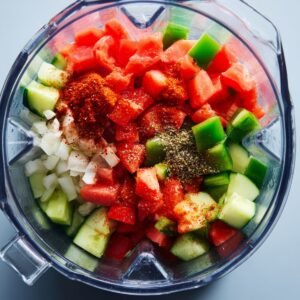
- Combine bread and tomatoes, then gradually blend in the prepared vegetables.

- Stream olive oil slowly into the mixture and adjust texture with ice water.

- Strain for smoothness, season carefully, and refrigerate for at least 4 hours.














Leave a Reply